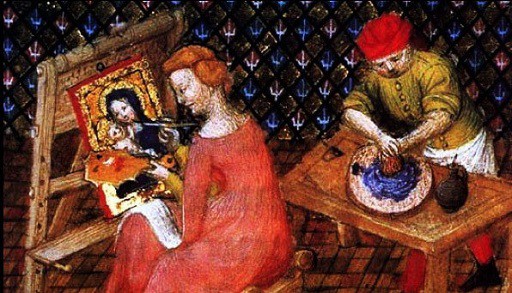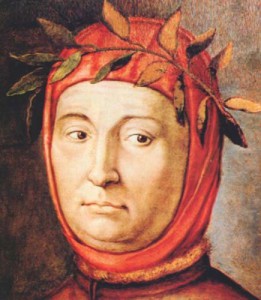I was rearranging things in my office the other day and came across my copy of Giovanni Boccaccio’s The Decameron, which I read during my college days, many, many years ago. I sat cross-legged on the floor and thumbed through the tome and read the notes running down the margins. I also recalled my professor becoming irate with me. I can remember his face vividly but not his name, though I know it began with a B. Was it Bollettino? Can’t remember.
We were discussing the Decameron when I raised my hand and asked if Boccaccio was imitating Chaucer’s Canterbury Tales. Dr. B’s temper went from 0 – to 60 in a flash. He stood and shouted, “Boccaccio came first! Chaucer was behind him by many years, decades!” He had other choice words for me (nothing vulgar) but he wanted the class to know that Italian literature was grossly overlooked in American schools and colleges.
Those of us educated in American schools are given a very constricted view of world literature. Perhaps, in some of the finer American high schools, this is not the case. Certainly, if one were majoring in European literature in college, I would think that the triumvirate of Italian greats (Petrarch, Boccaccio and Dante) is studied earnestly.
In the run of the mill literature class in U.S. high schools, the name Boccaccio is never alluded to. (My daughter was in an AP Literature class in a very good NYS district and it never came up.) This, of course, is a pity because many of the world’s great writers such as James, Twain, Joyce, Dostoyevsky, Keats, Druden, to name a few, all sourced Boccaccio. I wonder how many of your literature teachers mentioned this. They probably instead mentioned that realism in literature began in France around 1850, when in fact it started with Boccaccio’s Decameron.
Giovanni Boccaccio was the son of a Florentine merchant. He studied banking and law and it is through law that he made the acquaintance of many great men, included Petrarch and Dante. Disenchanted with his studies, he began to write, creating a prose which depicted life as it really was at that time, i.e. realism. He also wrote sonnets and short poems. In 1336, his first literary work was Filocolo. Two years later he produced The Man Prostrated by Love (Il Filostrato) the tragic love story of Troilus and Cressida; Boccaccio sourced a book written in Latin about the destruction of Troy for this book.
Boccaccio was advanced for his time. He wrote the psychological novel Elegia di Madonna Fiammetta in 1343 which gives the reader a window into the thoughts, emotions and subsequent actions of a jilted woman. He also wrote the first pastoral romance, The Nymph of Fiesole.
Women’s lives were so circumscribed: they were the homemakers, mothers and nuns. Their movements were restricted by their fathers, mothers, brothers, husbands and the Church. They spent their time shut up in their rooms, hovels and convents. Often, if they were women of means, and they would sit idle, with nothing to do but ruminate. This was in direct contrast to the men, who had social clubs, went hawking, hunting, fishing, riding, gambling and trading. As a consequence, women fell into depressions (at that time called melancholy.)
Unfortunately, this great writer, like many other authors, died in poverty. Though he produced magnificent work ( I have only talked to you about a minute fraction of his manuscripts,) he was dogged by ill health, obesity, fevers and dropsy his entire life. He died at 62, on December 21, 1375.
All I can say is Viva Boccaccio! Let the high school literature classes, where they read Shakespeare and Chaucer, also read a little Boccaccio.


